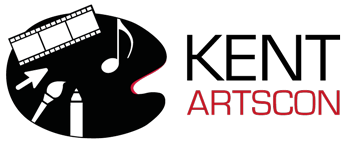Dr Elizabeth Raney lives in Los Angeles, California and after her grandmother took her to the King Tut exhibit in 1978 her world opened up to art and culture beyond Southern California. She worked in New York at Christies Auction House, in San Francisco at SFMOMA, and most recently at MOCA in Los Angeles. She holds a PhD in Cultural Art History from Warnborough College in Ireland and is interested in bringing to light how art influences culture. Warhol, Dr. Seuss and the Making of America is her debut non-fiction book. She is currently working on Van Gogh Rembrandt and the Opposing Sides of Holland which has a planned released date of 2023.
Look Twice: An Investigation into Potential Skepticism Embodied in the Art of Andy Warhol and Dr. Seuss
The Art of Andy Warhol and Dr. Seuss Functioned as a Bridge to Imagination and Cultural Progression
The art of Andy Warhol and Dr. Seuss functioned as a bridge to imagination and cultural progression in America. The 1960s celebrated reinvention and innovation. By the late 1950s, culture seemed to have stagnated and the norms of the postwar environment were no longer perceived as desirable. This climate combined with the young President John F. Kennedy and his family inspired the characteristic hopefulness and inventiveness of the 1960s. This climate led to a bridge of what could be imagined in the future. Fashion, music, the moon landing, the space program, the restoration of the White House by First Lady Jackie Kennedy, and the establishment of the Peace Corps were all seen as innovative and imaginative compared to the proceeding Eisenhower administration. In the 1960s, the country was alive with imaginative changes that would impact the future fabric of American society. In this environment of flux, Andy Warhol bridged the boundaries of subject matter for art, and Dr. Seuss replaced the “Dick and Jane” mold of children’s literature and provided a bridge to more imaginative children’s reading.
Art acts as a bridge to step on to imagine the future
Warhol was just one of many painters, photographers, and sculptors in the 1950s and 1960s breaking norms with imaginative new ways to create art. These artists pushed the aesthetic standard, which was rebellious to academic art traditionalists, but exciting and progressive.
Warhol was able to articulate the spirit of his age through his art that bridged the American culture to follow. Earlier art forms and movements did not particularly relate to what the public was experiencing in the 1960s, so the public embraced Pop Art. Dr. Seuss created a bridge to young readers from the bland school learning tools to imaginative stories and drawings of strange creatures, words, and adventures. His creative characters and stories would teach the children of America to read and imagine, and help their parents regain their childlike imaginations, which had become “land locked” because of the American cultural values of the 1950s. Both of them were creative and imaginative in ways that were popular – even contagious – as evidenced by their success. Skepticism about the norms in art and children’s books pushed both artists to go beyond the traditions of their respective fields, and their art functioned as a bridge to imagination and cultural progression.
